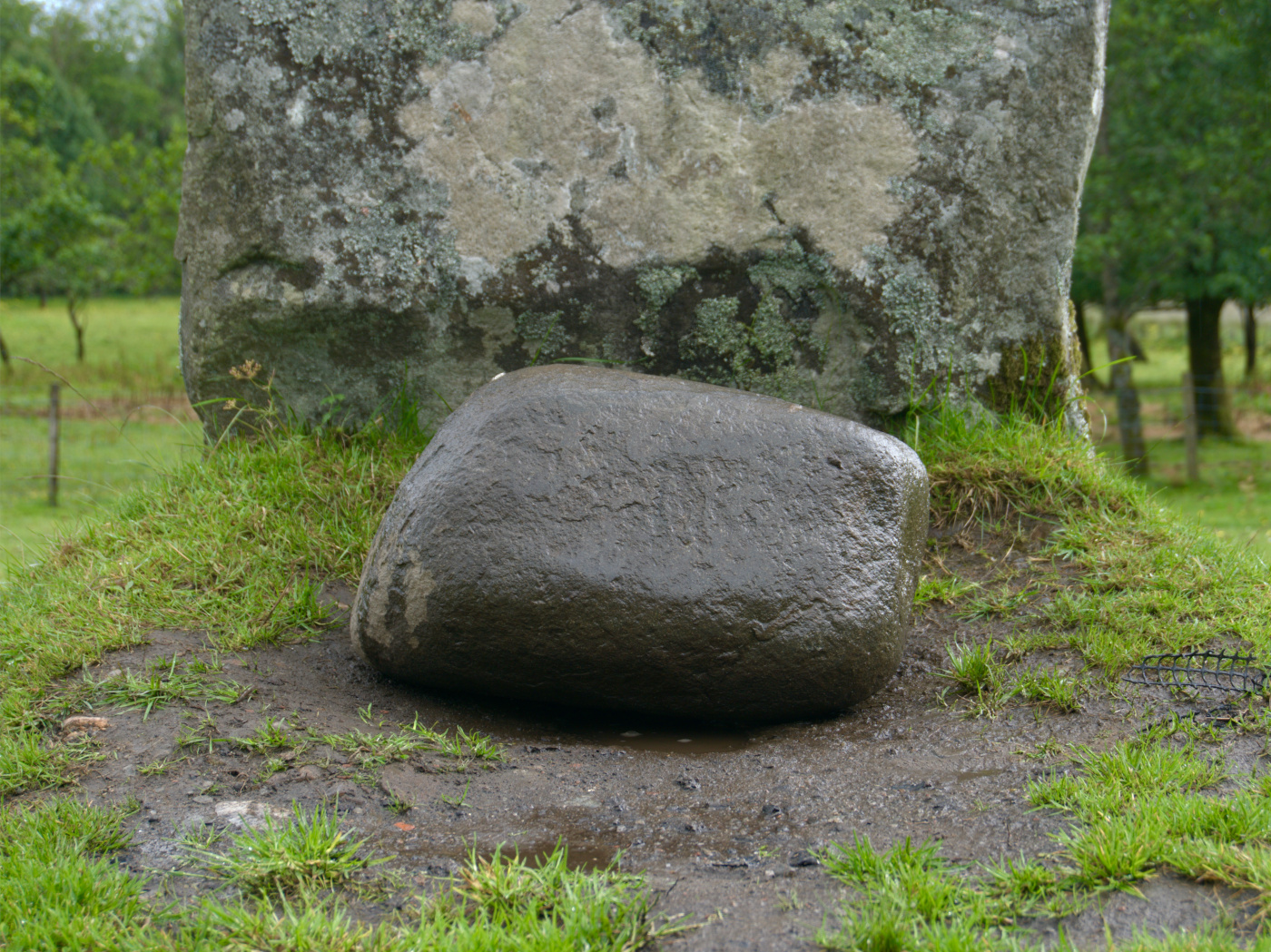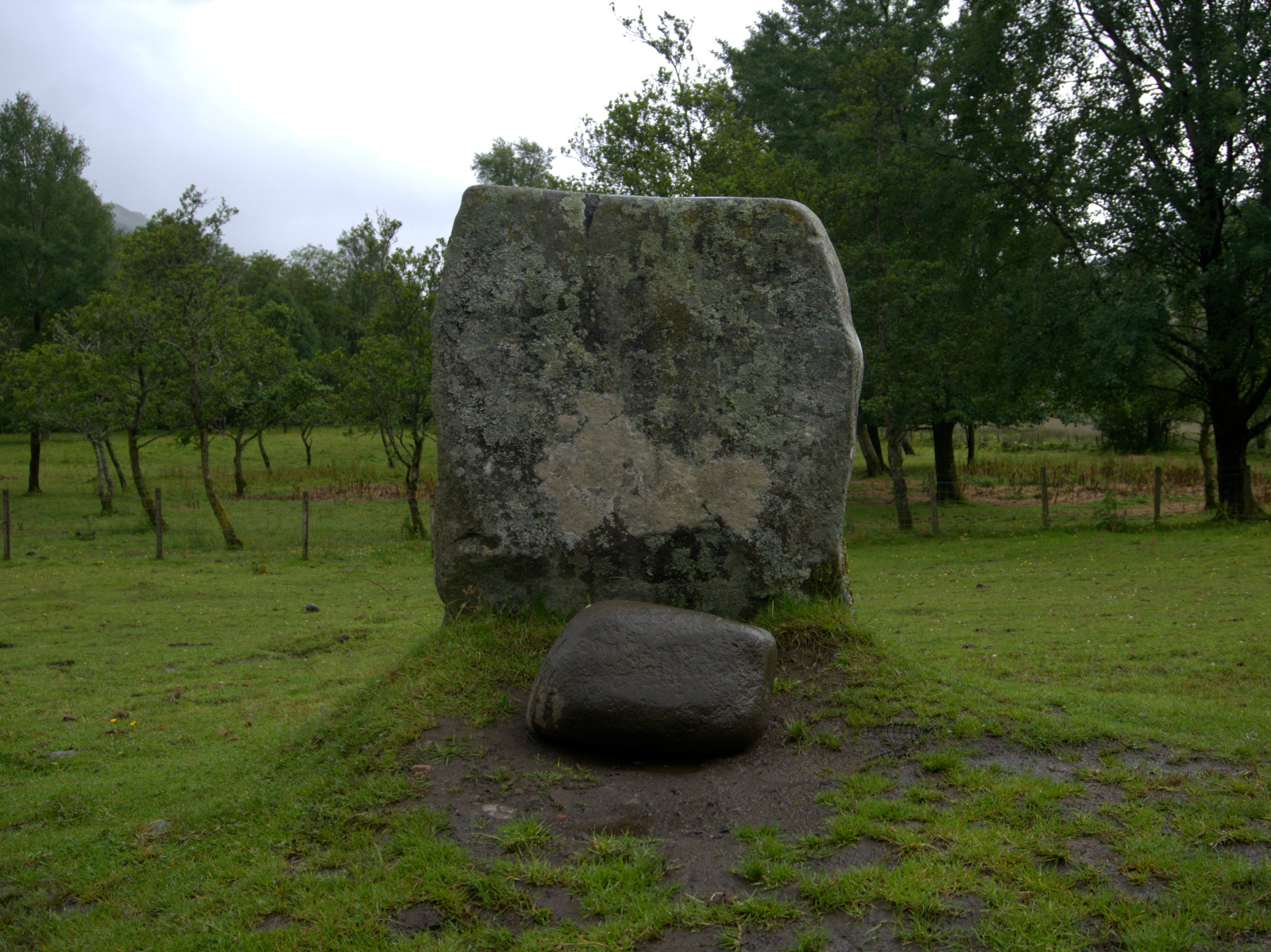The Puterach and Pudrac stones
A 94kg (207 lb) replacement stone sits next to its ancient standing stone partner, originally as a traditional lift reminiscent of the modern day Atlas stone load.

Challenge
The original challenge was to lift the Puterach (the stone) onto the Pudrac (the plinth).
Loading the Puterach on the eastern side of the Pudrac was traditional.
Unfortunately, it’s no longer possible to lift the stone to the ancient plinth due to wear and tear damage.
History
The Pudrac has been standing for many hundreds of years. Archaeologists have examined the stone and speculated its purpose. But one thing we know for sure is its use as a plinth for a lifting stone called the Puterach.
The first written reference to the Puterach stone was in 1848, but it was likely used in the 1600s. Making the stone site over 400 years old!
The Puterach was almost definitely a MacGregor stone:
The stone was a test of strength for young men, who had to lift it on to another stone. – Amelia Georgina Murray MacGregor1
There are even MacGregors who were named after the stone.
Unfortunately, the original stone is long gone. It was either thrown in a river, or built into the Manse dyke wall some time in the 1800s. This was done after a minister of the parish declared lifting the stone to be a dangerous pastime after many people were injured from attempting to lift the stone.
Peter Martin found a replacement stone to be used as the new partner for the Pudrac in 2011. It’s a local stone that is likely very close to the orginal.
The Puterach is known for being located near Balquhidder and the grave site of Rob Roy MacGregor. It’s almost a given that he attempted the Puterach.

Location
The stone and its plinth are located on private land where the owners kindly allow lifters to lift the stone. They also have an Instagram page and now record attempts in their visitor book. Curious horses live in the field, so be aware that they may come close to you and your belongings. Please do not bring dogs into the field.
The site is now also home to the Monachyle Stone (120kg, 265 lb) which was moved here from nearby after it was damaged by fire.
Unfortunately, lifts to the plinth are no longer possible due to wear and tear damage of the plinth.

The precise location is on our map.
In media
Briefly seen in Stoneland.
References
Stonelifting: An Ancient Test of Strength Revived - Martin Jancsics and Dr. Bill Crawford
-
History of Clan Gregor, 1898 ↩
Read the liftingstones.org letters
Join thousands of other stonelifters who read the world's most popular stonelifting newsletter.